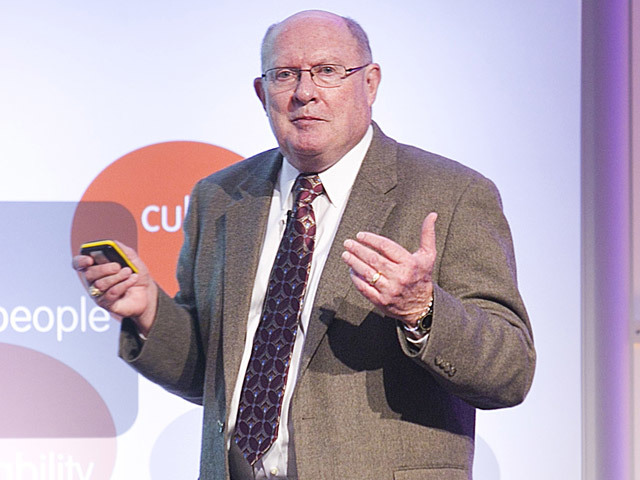
One way or another, safety’s been very prominent of late, both offshore per se and in the context of North Sea aviation.
On this occasion our focus is offshore and for two reasons.
The first is that Susan Mackenzie, head of offshore energy at the Health & Safety Executive has chosen Energy as the window to offer insight into the HSE’s new strategy for the North Sea.
The second is because of the SPE’s Another Perspective on Risk Conference staged last month that, among others, attracted David Pritchard across the Atlantic to deliver a powerful address – The Untold Story of Macondo.
“Who is he?” I hear some of you ask. Pritchard was the co-chair of the Presidential Commission for the Deepwater Horizon Study Group. He has huge experience of both drilling and auditing wells; he has a reputation that others respect.
But just because people respect someone like Pritchard doesn’t mean that they will take back to their workplace and apply the messages . . . the wisdoms . . . they heard and that they possibly innately know are the right ones.
Pritchard’s Aberdeen address was riveting, devastating in its brutal frankness. You could have heard a pin drop, so rapt was the attention.
He was very clear that Macondo should never have happened, had people done what they should have, and at every level, from top management whose job it is to lead . . . to set corporate policies and cultures, to the guys on the drill-floor who may or may not be being pushed by their bosses to drill faster, save money, save time, set new ROP (rate of progress) records.
He was very clear too that a major disaster may lie just around the corner, because of practices that remain widespread in the upstream oil and gas industry, in this case with particular reference to drilling and the accumulation of risk-taking that can so easily lead to the tipping-point that precipitates a blow-out with perhaps, loss of life, massive environmental damage and huge cost, not least to the operating oil company behind the well.
Pritchard pointed out that Macondo was accompanied by two other serious well-related incidents . . . Montara in the Timor Sea and Gullfaks C in the Norwegian part of the North Sea . . . all in a short space of time.
He waded into the body of opinion in the US which argues that, on a statistical basis, Macondo, was no big deal. But they were wrong.
“I have heard routinely in the United States from professional organisations, from our leaders, who have said: ‘We’ve drilled 50,000 of these wells so what’s the problem?’
“But we haven’t,” Pritchard asserted.
“In terms of similar complexity, as with Macondo, today we have drilled only 43. When you look at that from a purely statistical standpoint, it’s not one in 50,000, it’s one in 43.
“Whether we agree or not, that is a dismal number for the industry.”
Pritchard went on to say that it was vital for the industry to start with not denying where it is in terms of realism and ask the question: ‘Are we getting better?’
Pritchard was unequivocal in his response: “No we are not.”
He spoke of systemic failures at many levels, not least engineering. And, homing in on only post-Macondo well failures he said they all had one thing in common . . . failure to manage a well mechanical barrier for whatever reason.
“Every single one of them, we can do better. We as engineers have got to do better; it’s our discipline, it is our training,” Pritchard warned.
“We have to lose denial that our fire and explosion rate is not going up dramatically, as well as the well blowout incident rate. It is not acceptable to have a blowout. In fact, it’s not acceptable to have a kick, if we’re minding our engineering business.
“As drilling engineers we tend to live in a silo; the geoscientists on the Macondo were screaming about fast drilling; the inability to validate.”
And yet the risk of a blowout at Macondo was identified as being only moderate.
It turned out that accumulated risk was accepted from the beginning aboard the Deepwater Horizon and presumably among management onshore, whether BP, Transocean or other contractors involved.
Layers of protection were ignored, barriers were violated. The perceptions of risk and consequence were identified early on and yet never updated.
Pritchard said he had audited many wells worldwide and credited the industry with doing a “marvellous job” with technology, thus enabling faster and deeper drilling.
“The good news is we can drill like a bat out of hell,” said Pritchard.
“The bad news is, we can drill like a bat out of hell.”
It was explained that, during operations, time was too often not taken to call in the resident geoscientists, and to stop, circulate the well, validate progress thus far and to make sure the hole being drilled was clean before resuming “drilling like a bat out of hell”.
Pritchard observed that, on the final fateful day aboard the Deepwater Horizon – April 20, 2009, “the left hand didn’t know what the right hand was doing”.
And the rest is history.
He said too that the industry had never not been short-handed, under pressure, not as well-resourced as it ought. Despite that being the reality for decades did not exonerate it from screwing up, cutting corners, blaming others for failures, or whatever.
Listening to Pritchard ranks among the most compelling 45 minutes I have ever spent listening at any oil and gas conference in over 20 years.
I’d like to think that the rest of the audience sitting in the main auditorium at the AECC were equally captivated.
And Pritchard was right to say that companies must “honour” regulatory requirements. They must honour the fundamentals of well control.
It really is a case of ‘stop, look, listen, it always pays’.
Recommended for you
